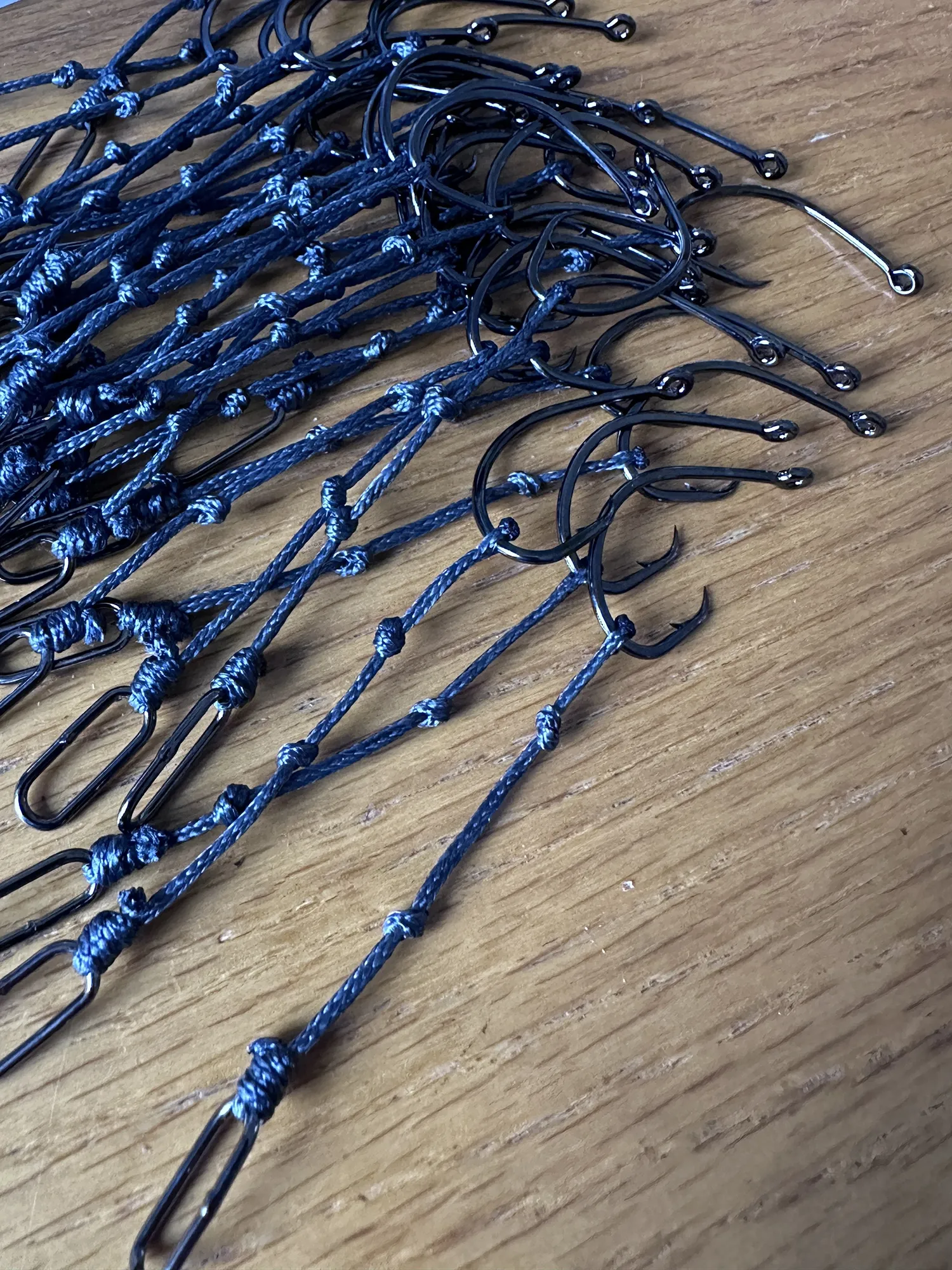Species of the Month: Thornback Ray (Raja clavata)
Explore this blog to learn more about Species of the Month: Thornback Ray (Raja clavata).
Published on April 15, 2025
- /
- Blogs /
- Species of the Month: Thornback Ray (Raja clavata)
Introduction
Spring Signals the Return of a Shoreline Favourite
April marks the beginning of an exciting period for shore anglers targeting thornback rays in the Bristol Channel. As water temperatures rise, these rays move closer to shore, offering anglers the chance to catch them from various accessible locations.
Habitat and Behavior
Thornback rays prefer sandy or muddy seabeds, often found near estuaries, bays, and coastal beaches. They are known to inhabit areas where they can camouflage themselves while waiting to ambush prey. Their diet primarily consists of crustaceans, small fish, and worms.

Prime Shore Marks in the Bristol Channel
Several shore fishing spots in the Bristol Channel are renowned for thornback ray catches:
- Brean Down: Plenty of mud flats that hold rays.
- Blue Anchor: Known for its muddy seabed, attracting various ray species.
- Berrow: Features extensive sand and mud flats, providing suitable habitats for thornbacks.
- Burnham-on-Sea: Accessible beaches with a history of ray catches.

Know Your Tide – Stay Safe While Chasing Rays
When fishing these marks, it's essential to be fully aware of the tidal ranges and local conditions, as the Bristol Channel is home to some of the highest tidal variations in the world — with ranges exceeding 13 metres (43 feet) in places.
This means that the sea can come in exceptionally fast, turning what was dry sand just minutes ago into deep, moving water. On some marks like Berrow, Burnham, and stretches near Blue Anchor, anglers can find themselves quickly cut off by rising water, especially on spring tides or in low-lying estuary areas.
Key Tips to Stay Safe While Shore Fishing in the Bristol Channel:
- Check the tide tables before every session – Know when high and low tide is due, and give yourself a safety buffer.
- Always have an exit plan – Before setting up, think about how you’ll safely get back if the tide pushes in faster than expected.
- Avoid venturing out too far on flats – Especially on big tide days. It’s not worth risking being stranded.
- Fish with a buddy if possible – Or let someone know your exact location and return time.
- Keep a charged mobile phone – And know the local emergency numbers or coastguard contact in case you get into difficulty.
Even experienced local anglers can get caught out by the speed and power of the tide in the Bristol Channel. The key is preparation and awareness. Fishing for thornback rays in April can be incredibly rewarding, but no catch is worth putting yourself at risk.

Tackle and Bait Recommendations
Rigs:
- Pulley Rig: Effective for presenting larger baits and handling bigger fish over mixed ground.
- Up-and-Over Rig: A favourite ray rig for some, especially when fishing from heights.
Hooks:
- Size 3/0 to 4/0 hooks are recommended, preferably in a strong pattern to handle the weight and fight of a thornback ray. The Dongle is my go-to.
Baits:
- Sandeel: A favorite among rays, especially when cocktail with another bait.
- Mackerel: Provide a strong scent trail to attract rays.
- Squid: Durable and effective, especially when combined with other baits.
- Bluey: Oily fish that can entice rays from a distance.
Using good quality potent bait is crucial, as rays rely heavily on their sense of smell to locate food in the Bristol Channel

Fishing Tips
Fishing Tips
- Tidal Timing: Fishing two hours before high tide and over the top often yields the best results, but this depends on location.
- Vary Casting Distance: While rays can come close to shore, fishing one bait at range can increase your chances.
- Bait Presentation: Ensure your bait lies flat on the seabed where rays can find it. Use enough lead to hold bottom.
- Patience: Rays may take time to locate your bait; remain vigilant and ready for subtle initial bites.
Conservation and Handling
Thornback rays are a vital part of the marine ecosystem. When handling:
- Avoid the Tail and thorns: While not dangerous, the tail could cause minor injury.
- Support the Body: When lifting, support the ray's body to prevent internal injuries.
- Quick Release: If not retaining the fish, return it to the water promptly to ensure its survival.

Conclusion
Closing the Session: A Rewarding Springtime Target
April offers shore anglers in the Bristol Channel a prime opportunity to target thornback rays. With the right tackle, bait, and knowledge of local marks, you can experience the thrill of catching this remarkable species. Always prioritize safety and conservation to ensure sustainable fishing for future generations.
